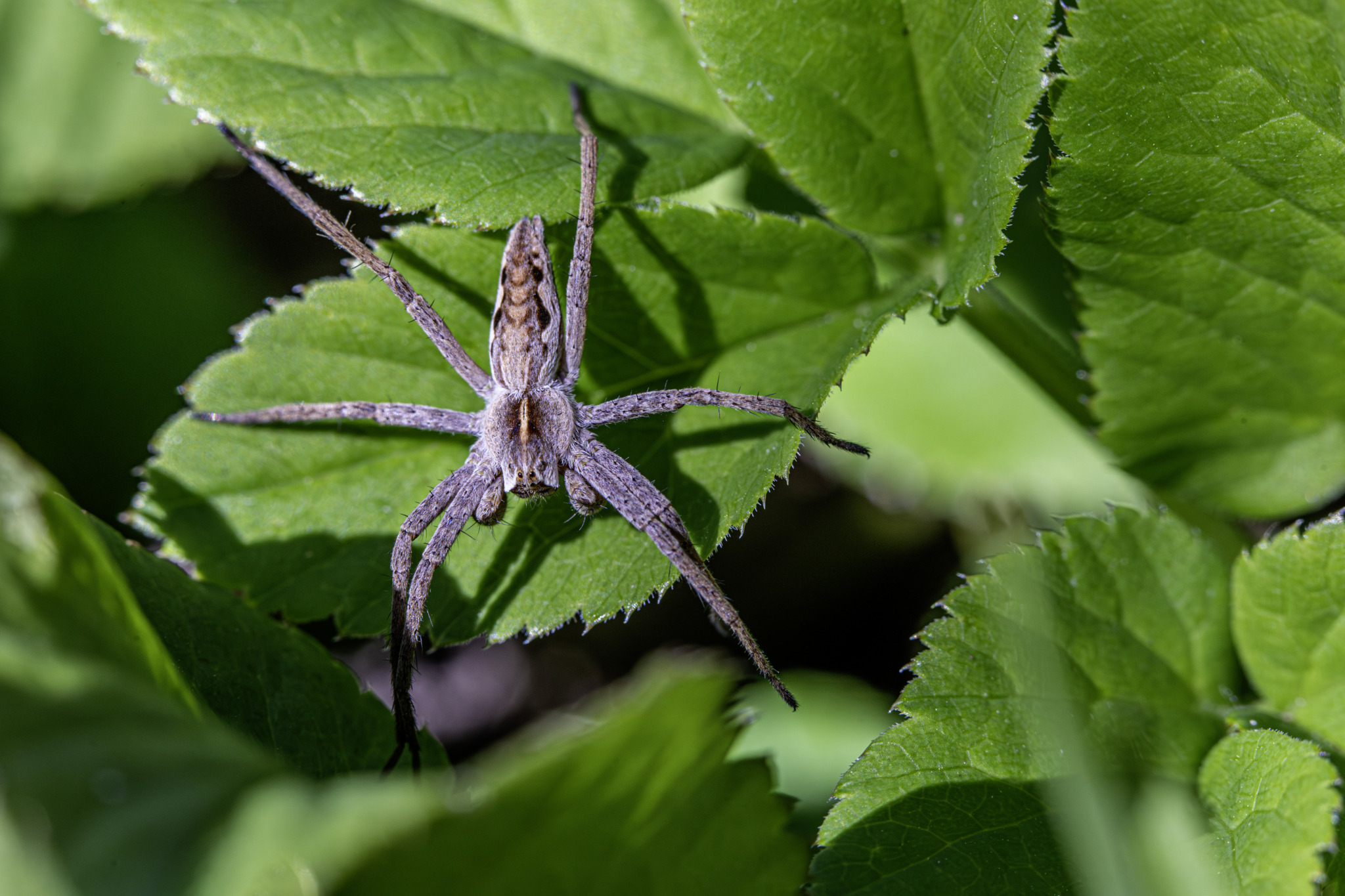The European Nursery Web Spider (Pisaura mirabilis) is a species of spider belonging to the family Pisauridae. Here are some key features and characteristics of the European Nursery Web Spider:
- Appearance: European Nursery Web Spiders are medium-sized spiders with a distinctive appearance. They have an elongated body and long, slender legs. Their cephalothorax (the front part of the body) is typically brown or grayish-brown, while the abdomen is lighter in color with dark markings or patterns. Adult females can reach lengths of up to 15 millimeters (0.6 inches), while males are slightly smaller.
- Habitat: European Nursery Web Spiders are commonly found in a variety of habitats, including grasslands, meadows, woodlands, gardens, and shrubby areas. They are often found near water sources such as ponds, streams, or marshes, where they can find suitable prey and nesting sites.
- Behavior: European Nursery Web Spiders are active hunters that rely on their keen eyesight and agility to capture prey. They do not build elaborate webs to catch prey but instead use a hunting technique known as “sit-and-wait” predation. They typically wait motionless on vegetation or on the ground, using their camouflage to blend in with their surroundings, and strike quickly when prey comes within reach.
- Diet: European Nursery Web Spiders feed primarily on small insects and other arthropods, including flies, beetles, grasshoppers, and caterpillars. They use their strong front legs to grasp and immobilize their prey before delivering a venomous bite to subdue them.
- Reproduction: European Nursery Web Spiders reproduce sexually, with mating typically occurring in the spring or early summer. After mating, females construct a silken egg sac, which they carry with their jaws (chelicerae) while searching for a suitable location to deposit it. The female then constructs a protective nursery web around the egg sac, where the spiderlings hatch and develop until they are ready to disperse.
- Parental Care: European Nursery Web Spiders are known for their unique parental care behaviors. The female guards the egg sac and nursery web, defending it against potential predators and parasites. She may also provide food for the spiderlings by capturing prey and feeding it to them until they are able to hunt on their own.
- Distribution: European Nursery Web Spiders are found throughout Europe, including the British Isles, mainland Europe, and parts of Asia. They are relatively common and widespread in their range, particularly in suitable habitats with abundant prey and nesting sites.
Overall, the European Nursery Web Spider is a fascinating and ecologically important species valued for its role as a predator and its unique reproductive and parental care behaviors. Despite their somewhat intimidating appearance, these spiders play an important role in maintaining the balance of their ecosystems by controlling populations of small insects and other arthropods.
Visited 606 times, 20 visit(s) today
Views: 514
Subscribe to the newsletter:
